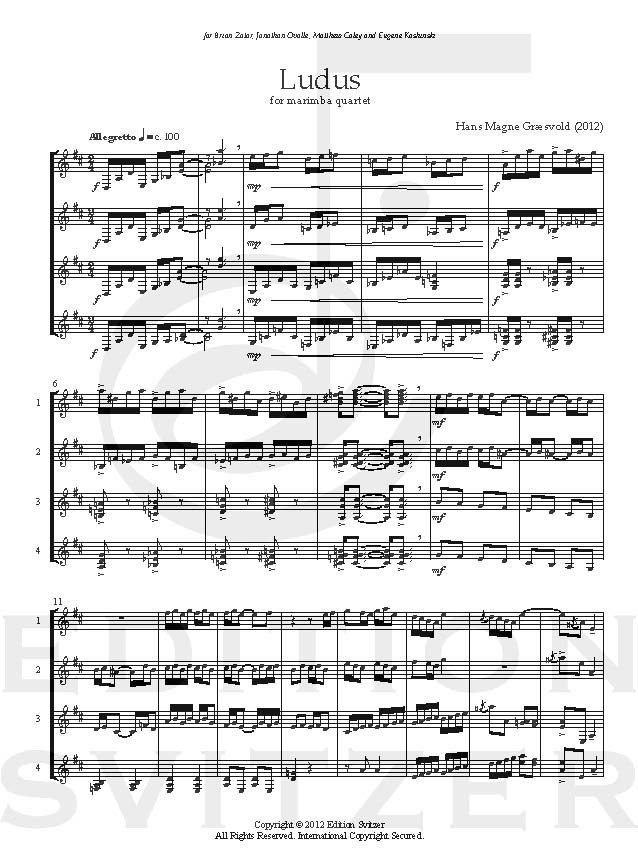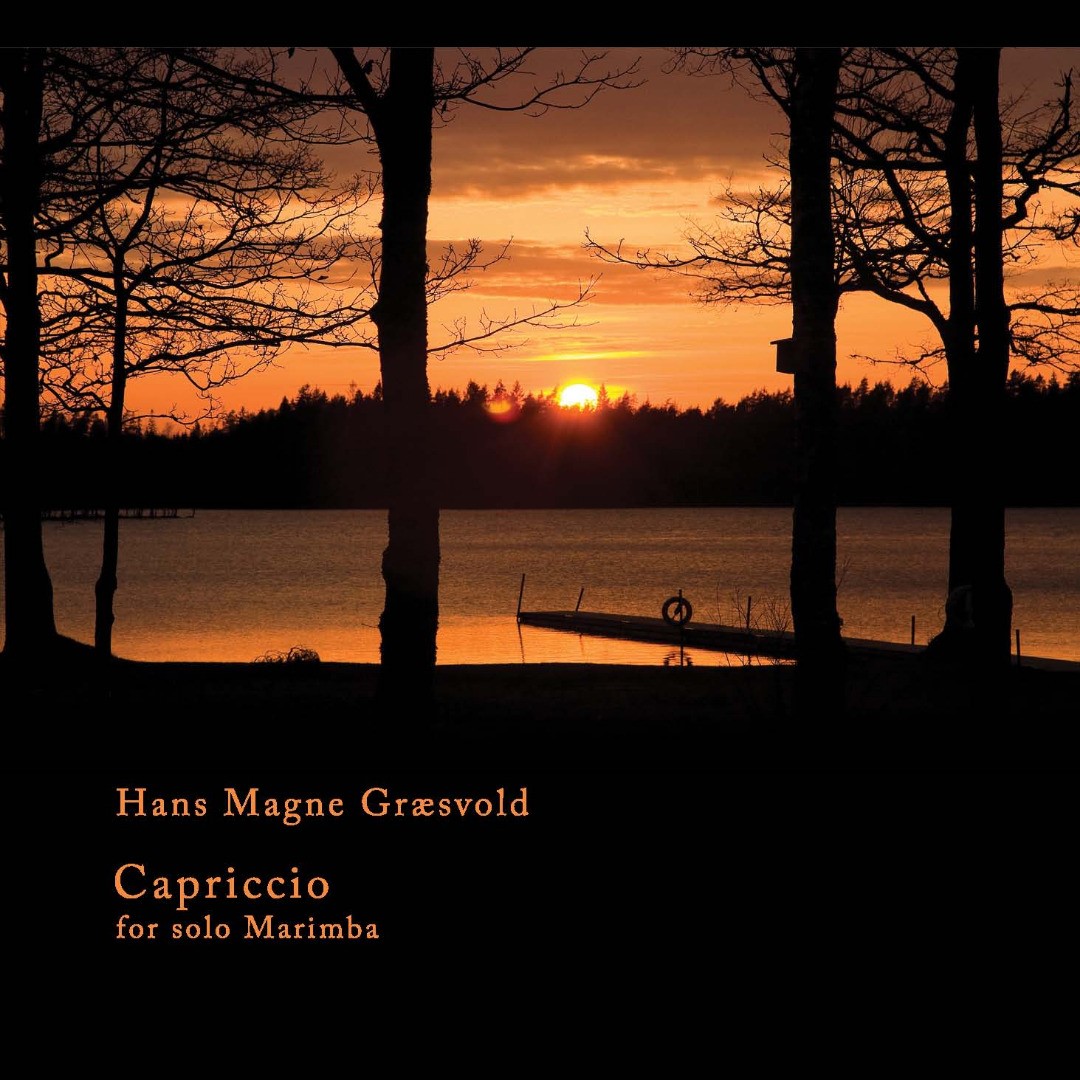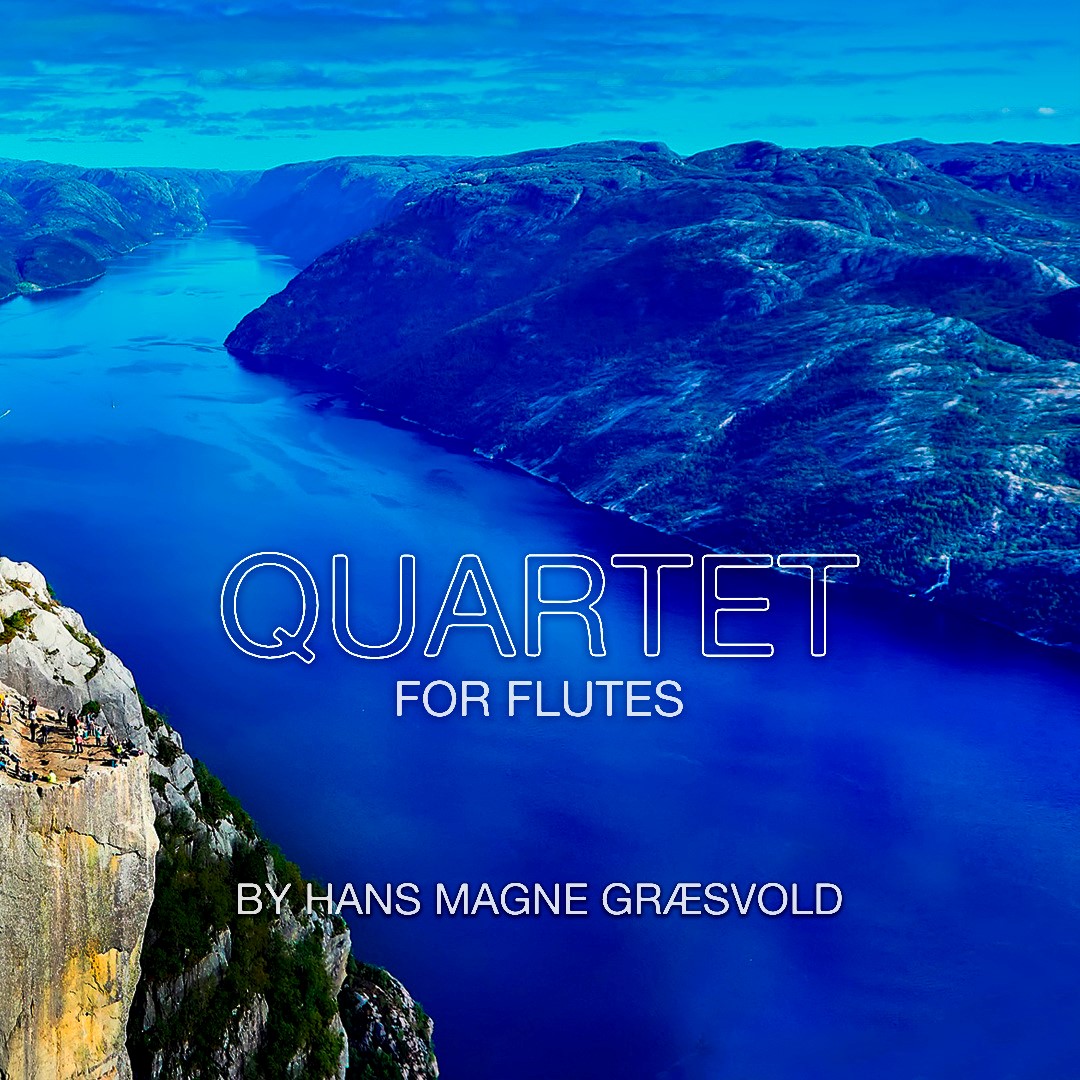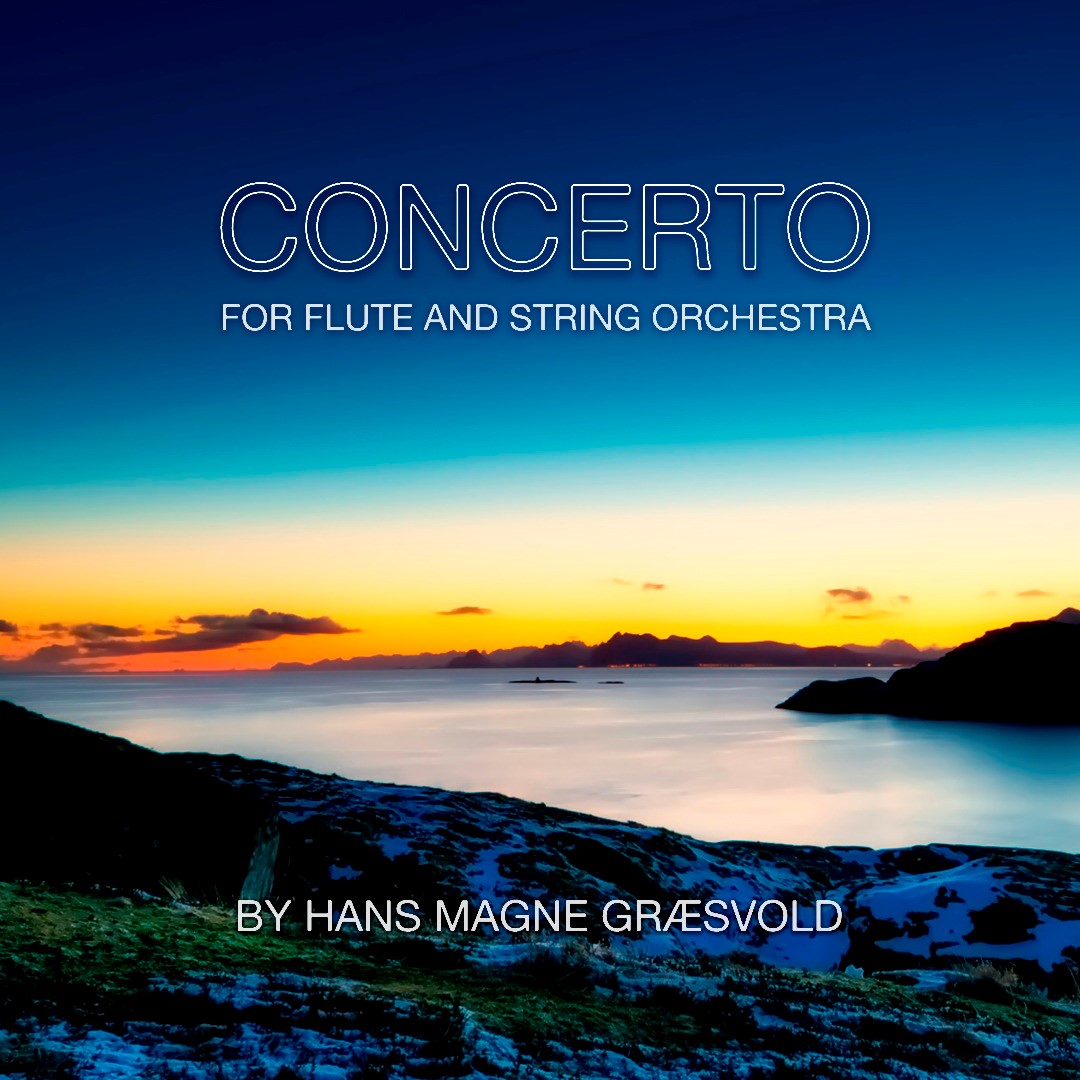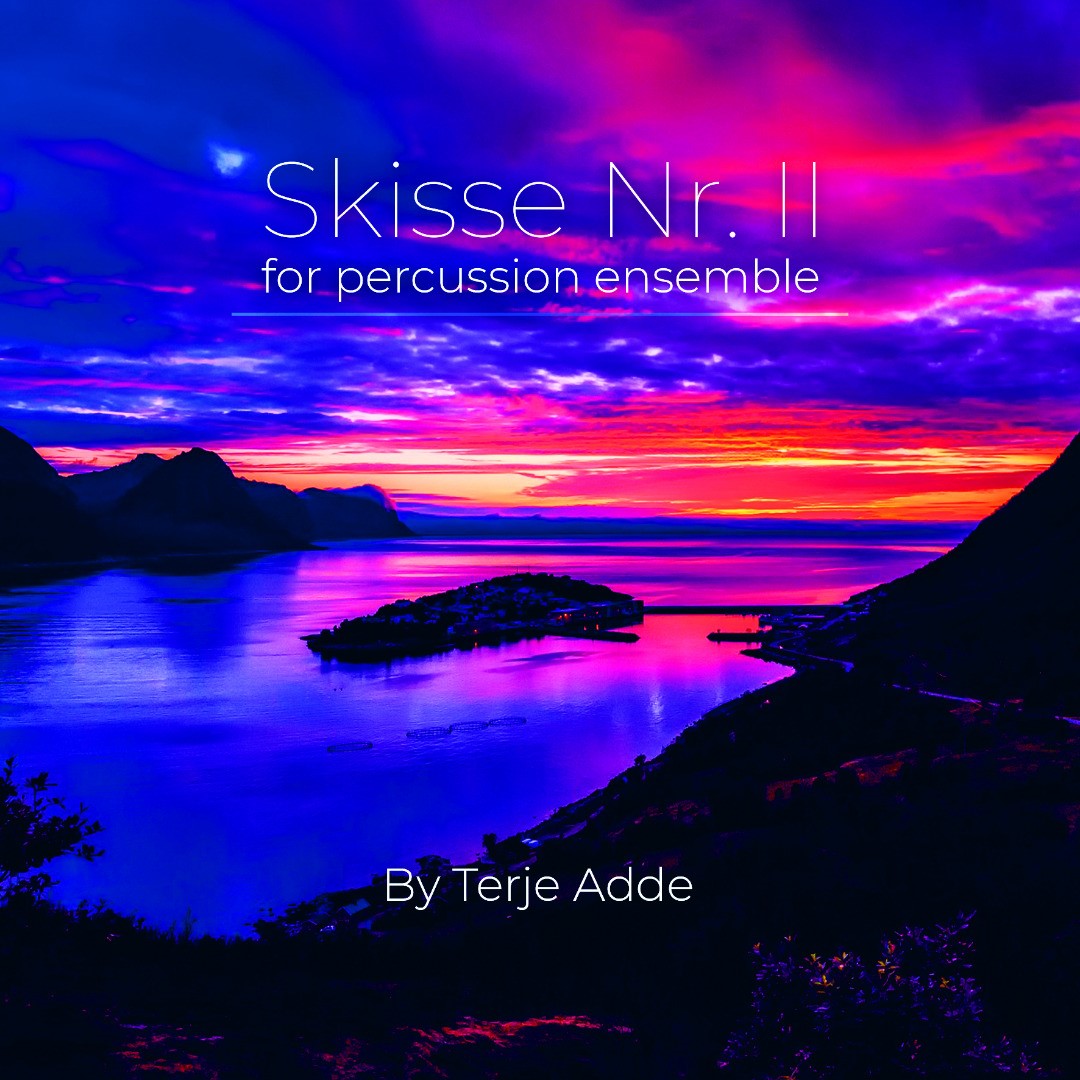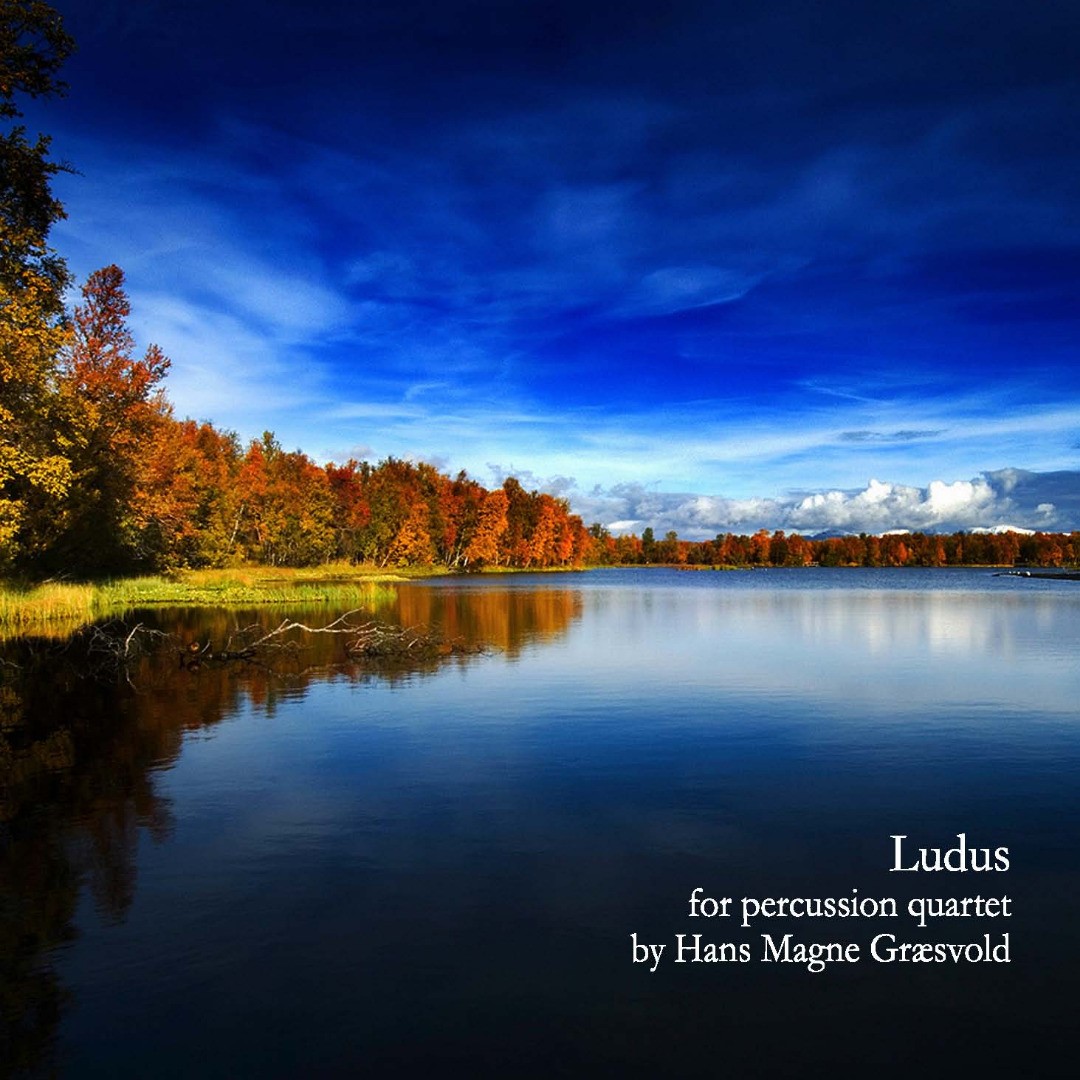
Ludus
Composer: Hans Magne Græsvold
Instrument: Percussion Ensemble
Level: unknown
Published: 2013
Price: €40.00
Item details
-
Description +
-
Duration: 8 min.
In some of my compositions I have used material from Norwegian folk music, especially music from Setesdal. Ludus belongs to that category. Here I use motives from Bjørnaraa-tona, a vocal melody (´stev´), and three walking dances - a type of dance called ´gangar´. The dances are named after three places in the valley: Sordølen, Flatelanden and Hovstaden. That is also true to Bjørnaraa, introduced in the middle of the composition. The folk music from Setesdal was performed on hardanger-fiddle, the national instrument of Norway, but I hope Ludus will show us that marimba also is well suited for that type of music.
Ludus is written for Brian Zator, Jonathan Ovalle, Matthew Coley and Eugene Koshinski.
-
-
Instrumentation +
-
Marimba Quartet
-
-
About the composer +
-
Hans Magne Græsvold was born in Vennesla near Kristiansand, Norway in 1936. He started playing the flute at the age of 7 and received his education in composition and flute at the Oslo Conservatory of Music and the University of Oslo. He made his debut as a flautist in Kristiansand in 1958 and in Oslo in 1962. After completing his Master`s degree in Music he became Assistant Professor at the University of Trondheim in 1963 where he remained until 1973. His main subjects were music history, composition, harmony and flute. In 1973 he moved back to the south and took up a similar position at the Agder Conservatory of Music in Kristiansand (from 2007 Agder University, Faculty of Fine Arts, Department of Music). In addition to his teaching Græsvold has contributed many articles to several scientific publications. In 1986 he was the editor of Edvard Grieg´s Vocal compositions with Orchestra, published by Peters in 1986, and in 1999 he co-edited with Terje Mathisen an edition of the songs of Sigurd Lie. Very little of this talented composer`s work has been published and Græsvold and Mathisen continue to edit and publish his compositions for choir, orchestra and ensembles.
As a composer Græsvold was initially influenced by Norwegian folk music, but later took inspiration from European composers especially Bartok, Schoenberg and Messiaen. His music includes several orchestral works (amongst them a flute concerto and a clarinet concerto) and chamber music (3 piano duos, 2 string quartets, 1 quartet for flute & strings, 2 sonatas for flute and piano, a suite for violin & piano, 1 piano sonatina and 1 guitar sonatina). In addition to several single movements for piano, guitar, flute, violin, cello, accordion, organ and 30 romances, Græsvold has also made several contributions to church music with his 3 cantatas, 2 masses and 30 motets. In addition he has made a large number of arrangements for different ensembles. He is a member of the Norwegian Society of Composers.
In 2007 Græsvold was awarded the Kings`s Order of Merit in gold as an acknowledgement for his work as a musician and composer.
-
-
Reviews +
-
Review (Percussive Notes, July 2014)
Folk music of the Setesdal valley of southern Norway is traditionally played on the hardanger fiddle, the national instrument of Norway, but here is scored quite successfully for marimba (the national instrument of Guatemala), in a charming, eight-minute quartet. Setesdal motives from vocal melody and instrumental dances are skillfully interwoven, with the resulting individual marimba parts surprisingly equal in both technical demand and musical prominence. Four mallets are required in each part for a few block chords, but the majority of the writing is in rapid, single-voice lines sprinkled with grace notes, and bursting with rollicking good humor and energy. I will definitely be programming this piece in the near future!
—William Moersch
-
-
Credits +
-
Front Cover graphics and layout: Ronni Kot Wenzell
Printed in Copenhagen, Denmark
Copyright © Edition Svitzer
www.editionsvitzer.com
-
